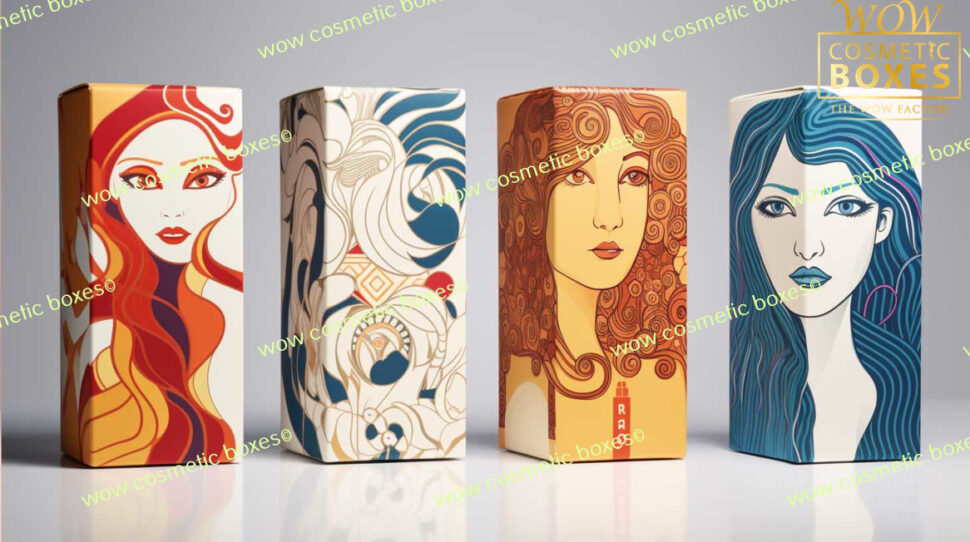
In the ever-evolving world of cosmetics, staying ahead of the curve is essential. Like a master artist blending colors on a canvas, tapping into the latest custom cosmetic packaging trends is crucial for brands seeking to captivate consumers and stand out from the crowd.
This article explores the dynamic landscape of custom cosmetic packaging, delving into key elements, innovative materials, sustainable practices, and the power of personalization. Discover how to unlock the potential of these trends and create packaging that leaves a lasting impression.
Key Takeaways
- Packaging design trends play a pivotal role in shaping the future of cosmetic packaging.
- Sustainability is a key trend in cosmetic packaging design, with consumers drawn towards eco-friendly options.
- Personalization options allow brands to connect with customers on a deeper level.
- Innovative materials and techniques contribute to the brand’s image and differentiate it from competitors.
The Evolution of Custom Cosmetic Packaging Design
Custom cosmetic packaging design has gradually evolved over the years, with frequent updates and advancements in response to changing consumer preferences and industry trends. Packaging design trends play a pivotal role in shaping the future of cosmetic packaging, as brands constantly strive to create innovative and visually appealing packaging solutions.
One of the key trends in cosmetic packaging design is sustainability. With growing concerns about the environment, consumers are increasingly drawn towards eco-friendly packaging options that minimize waste and promote recycling.
Another trend is personalization, where brands are offering customizable packaging options to cater to individual preferences. This allows consumers to feel a sense of ownership and uniqueness with their cosmetic products.
Additionally, minimalist designs and clean aesthetics are gaining popularity, reflecting a shift towards simplicity and elegance.
Key Elements of Modern Custom Cosmetic Packaging
One important element of modern cosmetic packaging is the incorporation of versatile and functional features, such as easy-to-open closures and multi-purpose containers. These elements not only enhance the overall user experience but also align with the current design trends in the cosmetic industry.
To stay on top of the latest design trends and effectively implement branding strategies, cosmetic companies should consider the following key elements in their custom packaging:
- Sustainable materials: Using eco-friendly packaging materials not only appeals to environmentally conscious consumers but also showcases a brand’s commitment to sustainability.
- Minimalistic design: Clean and minimalistic packaging designs are gaining popularity as they create a sense of elegance and sophistication.
- Personalization options: Customizable packaging allows brands to connect with their customers on a deeper level, creating a unique and memorable experience.
- Innovative shapes and sizes: Breaking away from traditional packaging shapes can make a brand stand out and attract attention on store shelves.
Innovative Materials and Techniques in Custom Cosmetic Packaging
Brands in the cosmetic industry can leverage innovative materials and techniques to create unique and visually appealing packaging designs.
One of the current trends in custom cosmetic packaging is the use of eco-friendly alternatives. With the increasing focus on sustainability, brands are opting for packaging materials that are biodegradable, recyclable, or made from renewable resources. This not only helps reduce the environmental impact but also appeals to environmentally conscious consumers.
Another trend is the incorporation of luxury packaging designs. Brands are experimenting with high-end materials such as premium papers, metal accents, and embossing to create a sense of exclusivity and sophistication. These techniques enhance the overall aesthetic appeal and create a luxurious unboxing experience for the consumers.
The Impact of Sustainable Packaging in the Cosmetic Industry
The demand for sustainable packaging in the cosmetic industry is driven by the need for environmentally friendly alternatives and the growing preference of consumers for eco-conscious products. As companies strive to reduce their environmental footprint, they are turning to sustainable packaging solutions that minimize waste and utilize eco-friendly materials.
The impact of sustainable packaging in the cosmetic industry can be seen in several ways:
- Use of recyclable materials: Many cosmetic brands are opting for packaging materials that can be easily recycled, such as glass, aluminum, and paperboard. This reduces the amount of waste that ends up in landfills and promotes a circular economy.
- Biodegradable options: Another trend in sustainable packaging is the use of biodegradable materials, such as plant-based plastics and compostable packaging. These materials break down naturally over time, reducing their impact on the environment.
Embracing Personalization: Customizing Cosmetic Packaging for Consumer Engagement
To enhance consumer engagement, cosmetic companies are actively incorporating personalization techniques into their packaging designs. Personalized branding is becoming increasingly popular as it allows companies to create a unique and memorable experience for their customers.
By customizing cosmetic packaging, brands can showcase their individuality and connect with consumers on a deeper level. Personalization can take many forms, from adding the customer’s name or initials to the packaging to creating limited edition designs that reflect the customer’s preferences.
This level of customization not only enhances the overall consumer experience but also creates a sense of exclusivity and loyalty towards the brand. By embracing personalization, cosmetic companies can stand out in a saturated market and build stronger relationships with their customers.

